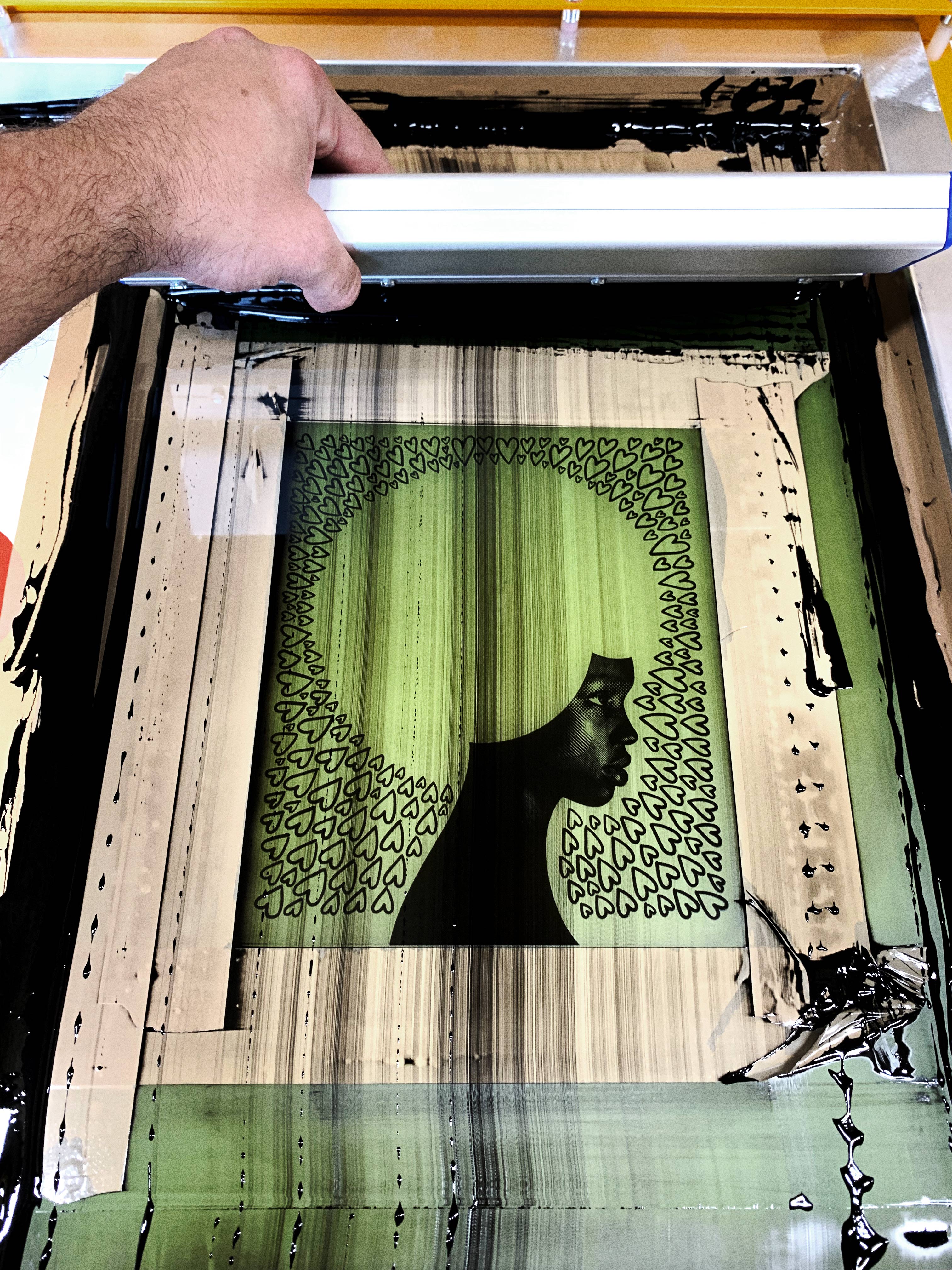ChatGPT said: The value of working with 10:9 Design Embroidery for branding
The Necessary Overview to Recognizing Screen Printing and Its Versatile Uses
Screen printing has a rich history that dates back to old times, progressing into an advanced strategy used across numerous markets today. This overview checks out the complexities of the screen printing procedure, detailing its applications in advertising and marketing, fashion, and home decoration - 10:9 Design Company. Comprehending these fundamentals can open up creative possibility for both creative and industrial jobs. The adhering to sections will disclose necessary ideas and methods to improve one's screen printing endeavors
The History of Screen Printing
Although screen printing has origins that trace back centuries, its advancement shows the creative and technical improvements of various societies. Coming from ancient China, the technique was initially utilized for decorating textiles and later infect Japan, where it ended up being essential to Ukiyo-e woodblock printing. The approach moved to Europe in the 18th century, where it acquired appeal among craftsmens and industrial printers. The innovation of image emulsion in the 20th century changed screen printing, permitting more detailed designs and higher performance. Artists like Andy Warhol even more pushed its appeal, using the tool to produce famous works that combined commercialism and art. By the late 20th century, screen printing had actually developed itself as a versatile method, utilized in vogue, advertising and marketing, and art. Today, it proceeds to develop, incorporating digital innovation and increasing its applications throughout numerous industries.
The Screen Printing Process Explained
Screen printing transforms creative visions right into tangible styles via a series of exact actions. A picture is produced and then transferred onto a screen, normally made of great mesh fabric extended over a framework. A light-sensitive emulsion is put on the screen, which is revealed to light, setting in areas not covered by the photo. After rinsing the unhardened solution, a pattern is formed.
Next, the screen is placed over the substrate, whether it be material, paper, or an additional product. Ink is then pushed through the open areas of the stencil utilizing a squeegee, depositing the design onto the substrate listed below. This process can be duplicated for several colors, requiring different displays for every shade. Lastly, the printed thing is healed utilizing warm to ensure the ink adheres effectively, causing a resilient, dynamic design ready for use.
Sorts Of Screen Printing Techniques

Furthermore, specialty strategies, such as discharge screen printing, eliminate dye from the material to produce softer prints, while foil screen printing applies metal aluminum foil to achieve a shiny surface (10:9 Design Screen Printing Texas). Each method provides distinct features, providing to various creative demands and manufacturing scales, ultimately expanding the opportunities within the screen printing domain name
Applications of Screen Printing in Different Industries

In addition, the signs and marketing sectors make use of screen printing for producing captivating screens and banners. This approach enables vibrant colors and complex layouts that catch focus. In electronics, screen printing is used for using conductive inks to motherboard, important for part connections. The home style market welcomes screen printing to produce distinct designs on fabrics and wall surface art. Generally, screen printing works as an essential tool throughout diverse areas, enhancing items with customized and visually enticing graphics.
Tips for Effective Screen Printing Projects
While embarking on a screen printing project, careful focus to detail can significantly improve the final result. Selecting high-grade materials is vital; this consists of the screen, inks, and substrates. Utilizing ideal mesh counts can impact ink deposition and information resolution. Prep work is equally important; complete cleansing of displays and proper exposure times assure crisp prints.
Next off, exact registration is important for multi-color prints. Utilizing positioning devices can help accomplish specific layering. Additionally, testing prints on scrap materials before manufacturing aids identify potential issues without losing sources.

Regularly Asked Questions
What Products Are Ideal for Screen Printing on Material?
Cotton and polyester blends are excellent for screen printing on fabric click here because of their durability and ink absorption. Furthermore, specialized fabrics like silk or canvas can create one-of-a-kind textures and surfaces, boosting the overall design high quality.
Just how Do I Clean and Maintain Screen Printing Equipment?
To clean up and maintain screen printing equipment, one ought to on a regular basis wash displays with suitable solvents, check squeegees for wear, lube relocating parts, and shop all products in a dry, dust-free atmosphere to lengthen their lifespan.
What Are the Environmental Effects of Screen Printing?
Screen printing can have considerable ecological effects, consisting of chemical waste from solvents and inks, water use throughout cleansing procedures, and energy consumption. Environment-friendly products and lasting methods are important for reducing these unfavorable impacts.
Can Screen Printing Be Done in your home Efficiently?
Screen printing can be successfully done at home with the ideal materials and techniques. Hobbyists can produce top quality prints, though success depends upon their skill level, equipment, and understanding of the procedure entailed.
What Are the Expenses Connected With Starting a Display Printing Business?

Starting a screen printing service involves prices for devices, products, and office. Initial expenditures usually range from a couple of hundred to several thousand bucks, depending upon the range, quality of equipment, and desired manufacturing capacity.
Screen printing has an abundant history that dates back to old times, evolving right into a sophisticated strategy used throughout various sectors today. Another method, rotary screen printing, utilizes cylindrical screens, facilitating constant printing on fabric rolls, consequently enhancing performance for large-scale productions. Furthermore, specialized techniques, such as discharge screen printing, eliminate dye from the material to develop softer prints, while foil screen printing applies metal aluminum foil to accomplish a glossy finish. In the fashion field, screen printing is widely utilized to develop dynamic layouts on apparel, making it possible for brand names to showcase their unique styles. Cotton and polyester blends are suitable for screen printing on textile due to their toughness and ink absorption.